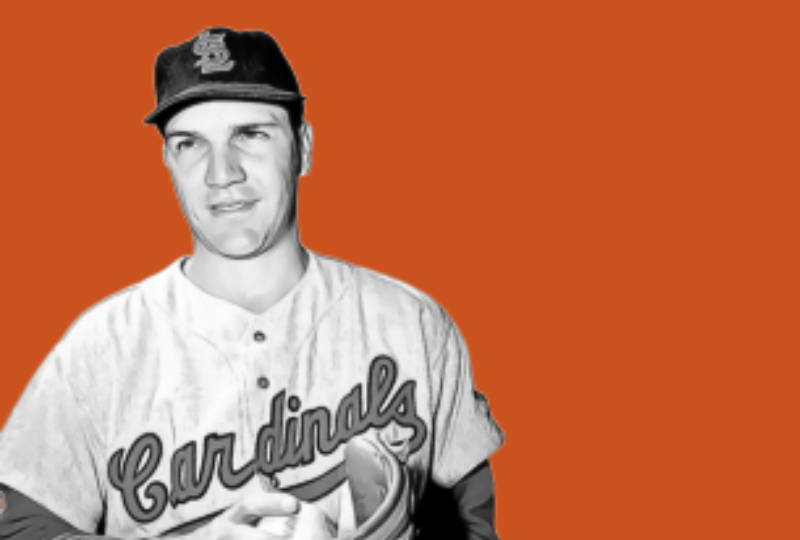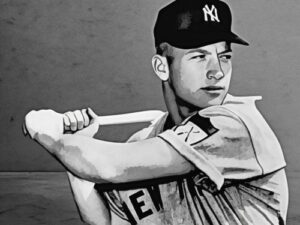Among the eight men on the Classic Baseball Era Ballot this year, Ken Boyer needs a public relations campaign. The former third baseman played his final game 55 years ago. He died 13 years and one month later, at the age of 51 from cancer.
Boyer has not had a voice for his baseball legacy for more than four decades. His case for the Hall of Fame deserves to be laid out for the 16-person panel that will vote in December.
Traditional Argument for Ken Boyer’s Place in the Hall of Fame
For some reason, the voters have been stingy in voting third basemen to the Hall of Fame. One reason is the unique skills required to play the position. A third baseman, unlike a middle infielder for much of baseball history, has been expected to sting the ball at the plate AND be a good defender.
Only 18 men who were primarily third basemen have been elected to the Hall of Fame. Eight of them have been elected since 1999. By comparison, there are 26 Hall of Fame shortstops.
Several third sackers who have strong arguments for the Hall of Fame have been kept out of Cooperstown because they failed to “tick the box” in areas voters found important. For example, few third basemen have reached the 3,000 hit and 500-homer mark, compared to first basemen and outfielders. Yet, Boyer’s career achievements clearly indicate he belongs among the best to have ever played the hot corner.
Every dominant third baseman of his era has been elected to the Hall of Fame. The best third baseman of the 1920s was Pie Traynor. The best third baseman of the 1930s was Ray Dandridge. Both are in the Hall of Fame.
In the 1950s, three great third basemen emerged: Eddie Mathews and Brooks Robinson, both of whom are on the short list of the greatest at their position. Then there was Boyer, who debuted in 1955. Yet, Boyer, like Ron Santo, who debuted in 1960, has struggled to gather support for a plaque in Cooperstown. More on that later. The great third basemen of the 1970s, 1980, 1990s, and early 2000s, are all in the Hall of Fame.
For years, Eddie Mathews and Boyer were in the National League together. For a dozen seasons, to be exact, from 1955 to 1966. Six times, The Sporting News selected Boyer as its best third baseman, with Eddie finishing second.
From 1950 to 1970, Mathews garnered 542 MVP votes, the most by a third baseman in baseball. During that same span, despite not starting his career until 1955, Boyer received 460 votes for MVP, the second-most in MLB for players at his position. There’s no doubt, that observers of baseball in the 1950s and 1960s considered Boyer as an elite player.
From 1955 to 1968, the years that encompass Boyer’s time as an regular, only eight players earned more votes for MVP in the National League. Seven of them are in the Baseball Hall of Fame:
Most National League MVP Votes, 1955-1968
- Willie Mays … 1,567
- Henry Aaron … 1,291
- Ernie Banks … 913
- Frank Robinson … 671
- Sandy Koufax … 637
- Roberto Clemente … 620
- Orlando Cepeda … 488
- Dick Groat … 486
- Ken Boyer … 460
- Warren Spahn … 456
Boyer compared to Ron Santo
Ron Santo was born nine years after Boyer. The two third basemen are not particularly contemporaries, though their Hall of Fame cases are not dissimilar. Both players competed in the National League when there were glimmering superstars at the top tier of the league. As a result, they were overshadowed, even on their own team. Santo by Ernie Banks and Billy Williams, and Boyer by Stan Musial and Bob Gibson.
It’s important to note that Ron Santo was a regular in the big leagues when he was 21 years old. By comparison, Boyer did not play his rookie season until he was 24. That’s because Ken missed two full seasons of his professional career while he served in the Army in the Korean War.
Still, Ken Boyer arguably achieved more accolades during his playing career than Santo. He won an MVP Award, while Santo did not. Each player had five Gold Gloves, but Boyer had more top five MVP finishes and a few more All-Star selections.
Famously, Santo was forced to wait to be elected to the Hall of Fame. He was deserving, but unfortunately the voters denied Santo his honor during his lifetime. By the numbers and by honors, Santo is one of the ten best third basemen to ever play professional baseball. He was elected in 2012 by a committee similar to the one that will consider Boyer this December.
Santo never played in a postseason, let alone a World Series. Boyer was MVP of his league and the MLB Player of the Year (according to The Sporting News) in 1964, when his Cardinals were champions. In the World Series that October, Boyer drive in six runs and hit a pair of home runs, including one in the seventh inning of Game Seven. His grand slam in Game Four is seen by many as the turning point of the series.
Using Analytics to Support Ken Boyer’s Election to the Baseball Hall of Fame
Boyer’s advanced statistical record illustrates his greatness. By Wins Above Replacement, Boyer rates among the best third baseman in history.
Only eight third basemen have as many as eight 8-WAR seasons. There’s Mike Schmidt, Eddie Mathews, George Brett, Wade Boggs, Ron Santo, Chipper Jones, and Adrian Beltre. The eighth is Boyer.
A 6-WAR season is generally seen as an MVP-caliber season. Boyer had five such seasons. That’s two more than Scott Rolen, and one more than Home Run Baker. It’s the same number as Brooks Robinson.
Chipper Jones and Adrian Beltre each had five 6-WAR seasons, the same number that Boyer had. George Brett only had one more 6-WAR season than Ken Boyer.
Thirteen third baseman have achieved 60+ WAR. Ten of them have plaques in Cooperstown. The only three that do not are Boyer, Graig Nettles, and Sal Bando.
Ken Boyer Compared to an Average Hall of Fame Third Baseman
| PLAYER | WAR | WAR7 | WAR5C | WAR3 | JAWS | WAR PER SN |
| Boyer | 62.9 | 46.4 | 33.8 | 22.4 | 54.7 | 5.0 |
| AVG HOF 3B | 71.4 | 44.8 | 32.0 | 22.2 | 58.1 | 5.1 |
WAR5C is Wins Above Replacement in the player’s best five consecutive seasons. WAR3 is WAR in the three best seasons. Boyer is comparable to or exceeds the average HOF third baseman in each category, except career WAR. We can explain that by his late start (caused by his service in the Korean War).
Given a year or two at the start of his career of average play, which he was denied by the war, Boyer would have been almost an exact comp for the average third baseman who has been elected to the Hall of Fame.
Summary of Ken Boyer’s Hall of Fame Case
- Since the year following the end of World War II (1946), Boyer’s 62.7 WAR ranks fifth among NL third basemen, behind only Mike Schmidt, Eddie Mathews, Ron Santo, and Scott Rolen (62.9 WAR).
- Boyer amassed the most MVP votes in baseball by a third baseman from 1955 to 1975, including Brooks Robinson and Ron Santo.
- Only eight players earned more MVP votes in the NL from 1955-68, and seven are in the Hall of Fame.
- Boyer ranks 13th all-time in Wins Above Replacement (WAR) among third basemen.
- Boyer’s 46.4 WAR7 (WAR in bests even seasons) ranks ninth all-time for third baseman. He rates ahead of Brooks Robinson and Scott Rolen in that statistic. The eight third basemen ahead of him are all in the Hall of Fame.
- Ken Boyer is 12th all-time in JAWS (the average of WAR7 + Career WAR) at his position. The only non-Hall of Famer ahead of him is Graig Nettles.
- Four players have as many as eight 5-WAR seasons and ARE NOT in the Hall of Fame: Boyer, Barry Bonds, Alex Rodriguez, and Mark McGwire.
- Boyer missed two seasons while serving in the Korean War (age 22-23 seasons). In the two professional seasons that sandwiched his military career, Boyer batted .313 and averaged 18 HR and 103 RBI. It seems likely he would have been and should have been in the majors at least a year before his 1955 rookie campaign.






